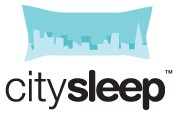There are already property owners who have mastered how to leverage their social media networks Facebook, Twitter and LinkedIn to enhance and develop their positioning and have become early adopters of social selling.
"Social selling is the process of researching, connecting, and interacting with potential customers on your social media networks."
But one very important part of social selling is to remember is that it is more about social and less about selling.
Social selling can be perceived as engaging regularly with your online network via conversations or your contributions to ongoing discussions in groups and communities. These are moments where you present yourself as a subject matter expert for example on your city, it’s tourist sites, questions on food, etc. These are opportunities to show that you are motivated to educate rather than sell.
The term “social selling” is still relatively new.
There is a belief held by some that social sites such as Twitter and LinkedIn can become easy distractions and may be used more as a place for looking for the next career move rather than business development.
The concept of social selling is to be present where your potential customers are or “fish where the fish are” as I was always told.
To start your journey into social selling an important first step is to decide which social media platform you want to focus on. Questions that you need to ask yourself are whether the channel is appropriate for your property and is this where your potential customers are located.
You will need to figure out which network your customers are most likely to use and plan on how to slowly establish a presence there. To get you audience to listen and believe what you have to say, this does not happen over night.
You can maximize your time on social sites by also catching up with the latest industry trends, news and track what your competitors are saying.
Part of social selling is also creating content about you, your property or the subject that you are most passionate about that educates, creates value and builds a feeling of trust with your community.
Participating in the social conversation
Many businesses had started their interactions on social media to initially monitor what others were doing and manage their own online presence and brand mentions.
Within the hospitality segment the power of consumer generated media, reviews and the desire of customers to actively seek recommendations online does have an impact on the booking process.
So through trial and error many businesses are now discovering the value of lead generation and the power of nurturing customers via these social media channels.
Social prospecting involves monitoring social networks for signs of customer interest or the profiles of prospective customers.
The role of a social seller is to build relationships by offering advice and professional insights. You do want to be seen as a regularly quoted and re-tweeted as a “thought leader”.
But want you would not do is use social media to be blatant about selling your property. If for example you notice a discussion on LinkedIn that’s relevant to hospitality or your specialist area, share your advice without the sales pitch.
Before you reach out directly to your network to build on the relationship, find out all you can about them through their social profiles. Research common connections for warm introductions and points of shared interest that you can leverage. See what groups they participate in and who they are following and interacting with.
Social media platforms are as good a tool to research customers as they are to gain insight on what your competitors are doing and saying.
We have put together seven steps to help you create a social media marketing plan to prepare you for social selling.
- Create a customer persona
Creating a persona for your customer will be a big help for making sure you target your efforts to the right audience. A persona is a semi-fictional representation of your ideal customer based on research and your own customer data.
Without knowing who your ideal customers are, their backgrounds, goals, challenges and how your property will meet their needs it’s very difficult to create content (or in fact, an effective overall marketing strategy) to attract visitors to your property website as potential guests.
Make sure you know what are the challenges that your personas face. What search terms do they use to find a solution to their problems? If you are going to catch the attention of these prospective guests you will need to show that you understand and empathise with their problems and present what particular solutions you have to meet their needs.
- Choose your social networks
You don’t have to be on them all — just the ones that matter to your audience and fit your brand.
Decide whether you set up a business account or a personal one, think about how you are going to use it and what kind of things are you going to publish. Does it make sense to have a personal account that you are going to post mostly business related topics – again think about your customer persona, how would they want to interact with you?
By commenting on, liking, and sharing prospects and customer’s posts, you can create warm relationships and boost your credibility by taking an interest in what others are doing and saying.
There are a number of factors that you should consider as you plan your social media efforts:
Time — How much time can you devote to developing your social media presence?
Resources — When you are up and running how you allocate your limited resources will depend on which social media channels you are publishing to.
You will also need to make time to manage your social media accounts to:
- Create a social media and posting strategy
- Respond to comments and friend requests
- Monitor your posts, competitors and if you have the time your customers
- Create conversations that will potentially help build relationships
- Research relevant trends
- Pre-load your social media calendar with your posts
- Above all be consistent in your messaging and tone
- And leave time to analyse performance and encourage all the team to participate
- Fill out your profile for your social media account
A completed social media profile shows professionalism that extends to both the visuals and what you write on your account. It is your “shop window” to your property, so it needs to be consistent with the actual experience you offer.
To make it easy for yourself you can use a free tool like Canva, which comes with prebuilt templates that set the proper sizes for you.
- Set-up the right look and feel for your account
To make sure that you appear the right-way to your potential customers ask yourself the following questions:
- Would you want to stay at your property?
- How do you want your customers to think about your company?
- Is your company thought of as a trusted advisor or for it’s selling when it should be listening?
The look and feel must be consistent across all your other customer touch points for example your website, emails, etc.
- Pick your social media posting strategy
How frequent should you post? What’s the ideal amount to post per day? When should you post? What should you post?
The best way to answer that is, it depends.
So much of the social media experience is about how your guests use and interact on these social media platforms. You always need to think from the perspective of the guest, not want your personal preferences are.
What should you be posting?
- Images are ideal especially for hospitality, video even better.
- There’s data to back this up: Image posts get more views, clicks, re-shares, and likes than any other type of post on Facebook. Same goes for Twitter.
When should you be posting?
If you are just starting out on these social networks, with no audience and no history, for business weekdays are best and weekends and after work hours for leisure. But this can also be a case of trial and error.
And how many posts?
- Twitter 3 – 6 per day
- Facebook 1 – 2 per day
- Google+ 2 – 3 per day
- Instagram 1 – 3 per day
- LinkedIn 1 -2 per day
The more you post, the more you’ll discover what type of content, timing, and frequency is right for your type of customer.
Set a benchmark. After two weeks or a month of sharing and posting, you can review your stats and assess the number of clicks, shares, likes, and comments per post. This’ll be your benchmark going forward.
- Automate and engage
The final piece of a social media marketing plan involves having a systematic approach to help you stay on top of updates and remain engaged with your community. It could be that you find a tool that enables you to manage all your social media posting in one place.
Social media requires engagement, too. When people start a conversation, open up and respond, it needs to be a “two-way” street. And remember to set aside time to follow-up with conversations that are happening across your social media platforms.
- Using social media to sell room nights
The key to closing more sales is not necessarily generating more and more traffic to your property’s website, it’s about having qualified sales leads.
Social connections allow for an approach where you can establish a much wider network of influencers within a prospective company or to understand more what the potential “hot buttons” are for a client.
Effective social sellers are active brand advocates, regularly delivering value through education and becoming a “go to” resource for information.
A key transition here is to learn how to become buyer-centric, and advise first rather than prematurely think of selling.
To help you with your social media planning we have created below an overview of how to plan your time:
Today
- Open or finishing opening your choice of social media account(s)
- Use your customer persona to target the right audience, with the correct message and be in the right social media network for them
Daily
- Respond to messages, monitor brand mentions and research what’s trending
- Create conversations - it should be two way - not a one way dialgoue
- Monitor the competition for what they are doing
Weekly
- Search for industry “thought leaders” to engage with
- Discuss tactics with your team and delegate tasks
- Start to look at your statistics – what does success look like?
- Look outside your window, see what is going on in the world outside
Monthly
- Assess your performance against goals and milestones
- Check your strategies - are you still doing the right thing
Take Away
HappyBooking is first and foremost a property management system. That means they help you with automating boring admin tasks and give you more time to focus on your guests.
On average HappyBooking customers can get back up to 10 hours per week – think what you could do with that extra time!
Our guest blogger is John Kennedy.
John is a hospitality consultant, dedicated to helping increase revenue through marketing, revenue management and efficient operations. www.kennedyandersson.com
Image source: www.freepik.com



